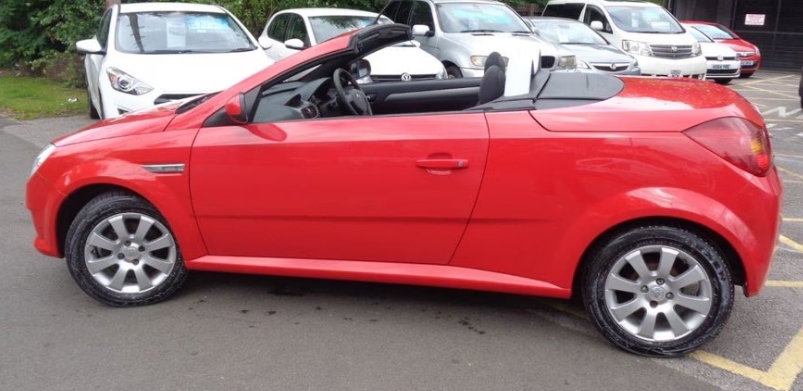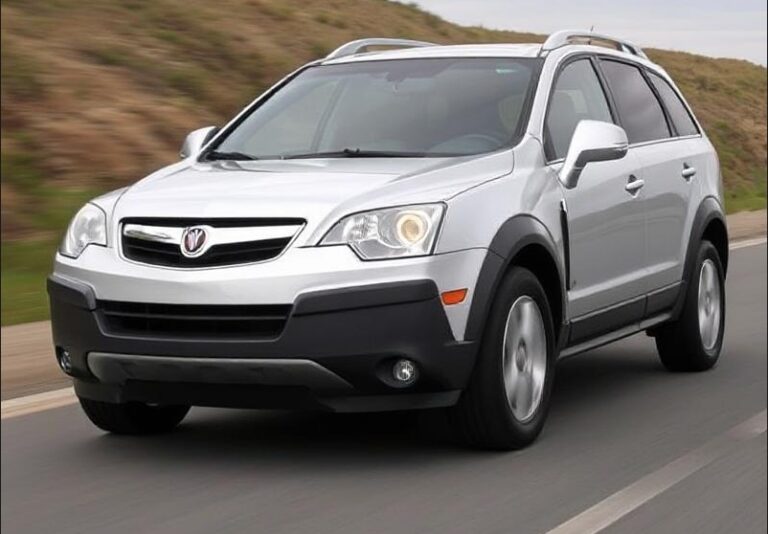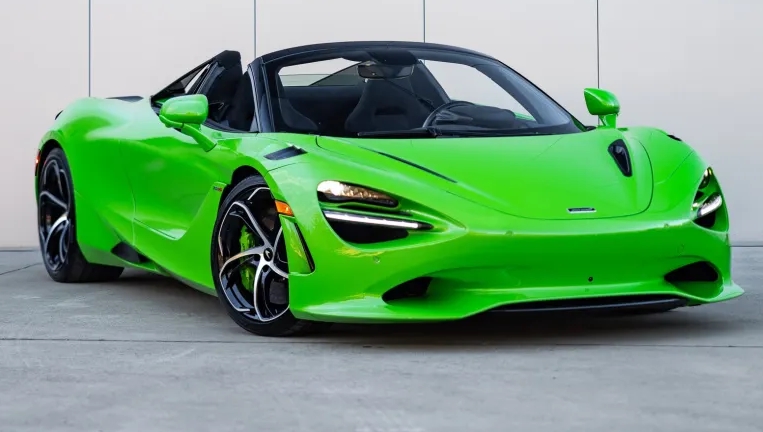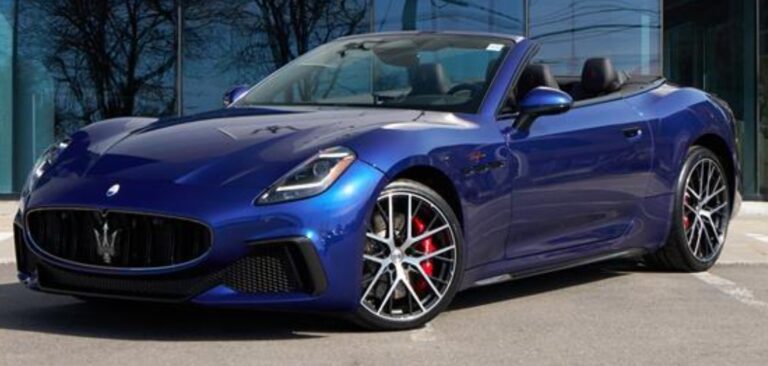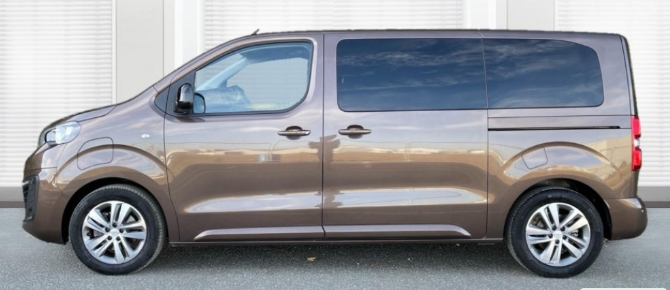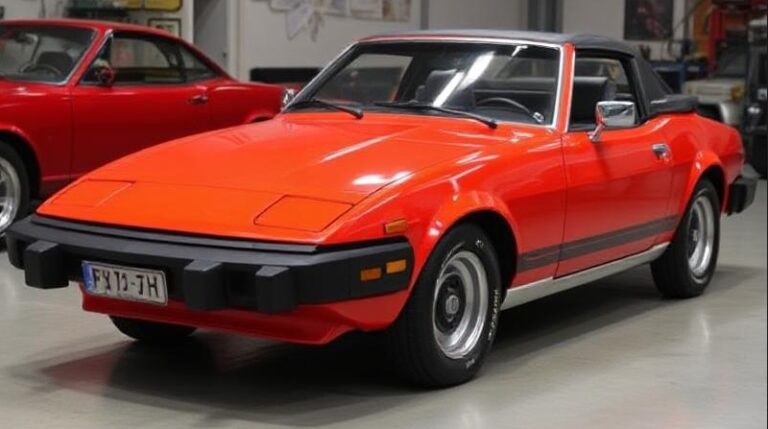From Bubble Coupe to Folding Hardtop: The Evolution of the Vauxhall Tigra
In the annals of Vauxhall’s history, few cars represent a departure from the norm quite like the Tigra. It was never a volume seller like the Corsa or Astra, nor did it possess the executive clout of the Insignia. Instead, the Tigra existed in a niche of its own making: a compact, style-conscious machine designed to offer flair and fun without the associated high price tag. Over two distinct and dramatically different generations, the Tigra captured the automotive zeitgeist of its time, first as a curvaceous 90s coupe and later as a sophisticated folding hardtop. This is the story of its evolution.
Generation 1: The Tigra A (1994-2001) – The Iberian Bubble
The story of the first Tigra begins not on the production line, but at the 1993 Frankfurt Motor Show. Opel, Vauxhall’s German parent company, unveiled a striking concept car named the Tigra Roadster. This open-top, two-seater study showcased a bold new design language, full of soft curves and organic shapes that stood in stark contrast to the angular designs of the 1980s. The public reaction was overwhelmingly positive, convincing General Motors that a small, affordable coupe based on this new aesthetic had significant market potential.
While the roadster concept was shelved, the design DNA was carried over to a 2+2 coupe built upon the reliable and cost-effective underpinnings of the second-generation Vauxhall Corsa (Corsa B). The production model, simply named the Tigra, was launched in the UK in 1994.
Design and Engineering
The most memorable aspect of the Tigra A was its styling. Penned by a team led by Japanese designer Hideo Kodama at Opel, its “bio-design” was a masterclass in curvaceous form. The car was defined by its smooth, uninterrupted lines, a low-slung front end with distinctive elliptical headlights, and a cabin that seemed to be a single, bubble-like glasshouse. The defining feature was its dramatic, wrap-around rear window. This complex piece of curved glass flowed seamlessly from the C-pillars, eliminating the traditional boot lid seam and creating a truly unique silhouette. It was a car that looked like nothing else in Vauxhall’s showrooms.
Built at the GM plant in Zaragoza, Spain, alongside the Corsa it was based on, the Tigra shared much of its mechanical hardware. This was both a blessing and a curse. It meant running costs were low and reliability was on par with its supermini sibling. However, it also meant the driving experience was more Corsa than coupe. While Lotus had been consulted to fine-tune the chassis, imbuing it with a firmer ride and sharper steering response than the standard Corsa, it could never quite match the dynamic prowess of its arch-rival, the Ford Puma, which set a new benchmark for front-wheel-drive handling.
Models, Engines and Trim Levels
In the UK, the Tigra A was offered with a straightforward engine lineup, both sourced from GM’s Ecotec family of 16-valve petrol units:
1.4i 16v: This was the entry-level engine (X14XE), producing a respectable 89 bhp. It provided brisk, if not scintillating, performance, making it the more popular choice for buyers prioritising style and low insurance costs.
1.6i 16v: Sourced from the sporty Corsa GSi, this engine (X16XE) produced 105 bhp. It endowed the Tigra with a warmer character, reducing the 0-60 mph time to under 10 seconds and offering more enthusiastic in-gear acceleration.
The trim level structure for the Tigra A was less rigid than for mainstream models. For much of its early life, the car was sold in a single, well-equipped specification based on the engine size. Standard features typically included power steering, driver’s airbag, central locking, and electric windows.
Over its lifecycle, Vauxhall introduced numerous special editions which effectively served as distinct trim levels, adding value and unique features. These included:
Chequers (1998): A popular edition featuring distinctive chequered flag decals, unique chequered interior upholstery, alloy wheels, and often air conditioning.
Marine: Offered in a specific Nautic Blue paint with special seat fabric.
Abyss: Finished in a deep Star Silver or Nocturno Blue, this edition came with unique “Abyss” cloth trim.
Mirage: A later edition featuring air conditioning and a CD player as standard.
The interior was largely lifted from the Corsa, which meant functional but uninspired plastics. The main drawback was the rear seating. Billed as a 2+2, the rear seats were incredibly cramped and suitable only for small children or luggage, a common compromise in this segment. Despite these practical shortcomings, the Tigra A sold well, proving that a generation of buyers valued distinctive design and accessible fun above all else. Production ceased in 2001, leaving a coupe-shaped hole in Vauxhall’s lineup.
Intermission and a Market Shift
The early 2000s witnessed a seismic shift in the small, fun car market. The coupe was falling out of favor, usurped by a new trend kickstarted by the Peugeot 206 CC: the compact coupe-cabriolet. These cars, with their ingenious folding metal hardtops, offered the security and all-weather refinement of a coupe combined with the open-air thrill of a convertible at the touch of a button. Recognizing this trend, Vauxhall/Opel decided the Tigra name was too valuable to abandon and began work on a successor that would embrace this new philosophy entirely.
.
THIS is GOOD stuff if your car is in need:

.
Generation 2: The Tigra B TwinTop (2004-2009) – The French Connection
After a three-year hiatus, the Vauxhall Tigra returned in 2004, but it was a Tigra in name only. The second-generation model was a complete reinvention. The bubble-like curves and 2+2 layout were gone, replaced by a sharp, angular design and a strict two-seater configuration. Its party piece was the sophisticated electro-hydraulic folding steel roof that gave it its “TwinTop” name.
Design and Engineering
Underneath its new skin, the Tigra B was based on the third-generation Corsa (Corsa C) platform. However, the engineering and production of this far more complex vehicle were outsourced to a specialist. French coachbuilder Groupe Heuliez, renowned for its expertise in producing convertibles for major manufacturers, was contracted to develop the roof mechanism and assemble the car at its Cerizay facility in France.
This partnership resulted in a clever and robust design. The two-panel steel roof could retract and stow itself in the boot in just 20 seconds. With the roof up, the Tigra was a snug, refined coupe with excellent noise insulation. With it down, it was a stylish roadster. This dual personality was its core appeal. The design, while more conventional than its predecessor, was handsome and contemporary, featuring the sharp creases and bold V-grille that defined Vauxhall’s mid-2000s family look. A distinctive central roll-bar finished in silver provided both style and safety.
The boot mechanism was particularly innovative. To allow access, the entire rear boot section hinged backwards, even when the roof was stowed, creating a surprisingly large opening. Boot space was generous for the class with the roof up (440 litres), but was significantly compromised when the roof was folded down, leaving just 250 litres.
Models, Engines and Trim Levels
The engine range for the Tigra B TwinTop was more diverse than the original, catering to a broader spectrum of buyers:
1.4i 16v Twinport: The volume seller (Z14XEP), producing 89 bhp. It offered adequate performance for cruising and city driving, focusing on fuel efficiency.
1.8i 16v VVT: The performance option (Z18XE), producing 123 bhp. This engine gave the Tigra a genuinely sporty feel, making it a much more engaging drive than the 1.4L model.
1.3 CDTi 16v: In a move that would have been unthinkable a decade earlier, Vauxhall offered a diesel engine (Z13DT). This 69 bhp turbocharged unit was not about speed, but about exceptional economy, capable of over 60 mpg. It made the stylish convertible a surprisingly sensible daily driver.
In the UK, the Tigra B was offered with a more clearly defined trim hierarchy:
Tigra (Standard): This base model was well-specified, including 16-inch alloy wheels, a CD player, remote locking, and sports seats.
Sport: Building on the standard model, the Sport trim added larger 17-inch alloy wheels, a lowered and uprated sports suspension for sharper handling, front fog lights, and aluminum pedals. This was the choice for those seeking a more dynamic experience.
Exclusiv: This range-topping trim focused on luxury. It featured leather seat trim, heated seats, a leather-covered steering wheel, and often more sophisticated stereo systems. It was primarily paired with the 1.8i engine.
Towards the end of its life, special editions like the “Red” and “Black” were introduced, offering unique color schemes and enhanced specifications, including color-coded interiors and special alloy wheels, to maintain sales momentum.
The Tigra B was a strong contender in a crowded market that included the Peugeot 207 CC, Nissan Micra C+C, and Mitsubishi Colt CZC. It was praised for its clever roof, decent practicality (for a two-seater), and sharp styling. In 2004, it was even voted “Cabrio of the Year” at the Geneva Motor Show.
Conclusion: A Legacy of Style
Production of the Vauxhall Tigra TwinTop ended in 2009. The global financial crisis had taken its toll on niche vehicle sales, and the once-booming compact coupe-cabriolet market began to shrink rapidly as consumer tastes shifted towards small crossovers and SUVs. Vauxhall, like many other manufacturers, chose not to replace its niche roadster, focusing instead on its core models.
The Vauxhall Tigra’s evolution tells the story of two different automotive eras. The Tigra A was a product of the optimistic and stylistically adventurous 1990s, a car that prioritized unique design over ultimate driving dynamics. The Tigra B was a clever, sophisticated response to the technical trends of the 2000s, offering two cars in one and bringing a touch of premium feel to the supermini class.
Though neither generation set the sales charts alight, the Tigra carved out a memorable legacy as a machine that dared to be different. It was a car bought with the heart, not the head; a stylish statement of individuality that brought a welcome dose of flair to Vauxhall’s sensible and pragmatic range.
